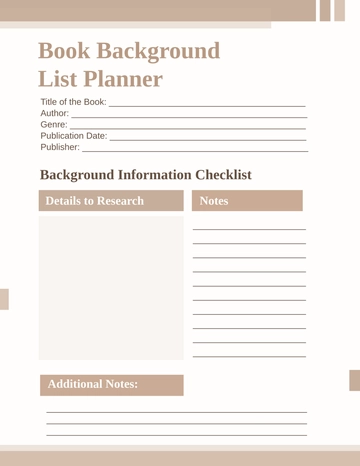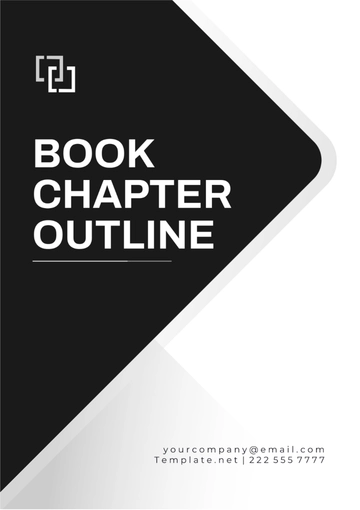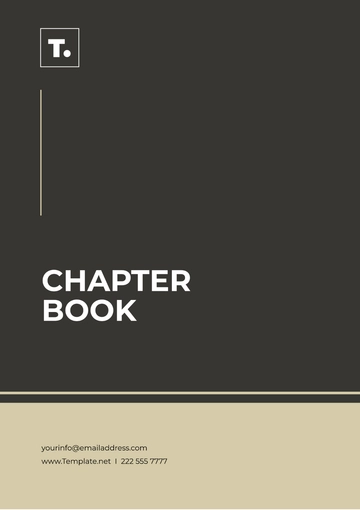Free Book Rubric Report

I. Introduction
The Book Rubric Report serves as a structured evaluation tool designed to assess the quality of a book across various dimensions. This report aims to provide authors, educators, and reviewers with a comprehensive analysis of the book's content, organization, writing style, and mechanics. By utilizing a standardized rubric, this evaluation process ensures consistency, objectivity, and thoroughness in assessing the book's strengths and areas for improvement.
The importance of a Book Rubric Report lies in its ability to offer actionable feedback to authors, guiding them in refining their work to meet the highest standards of excellence. For educators, this report facilitates the grading of student assignments and provides valuable insights into students' understanding and mastery of course materials. Additionally, reviewers can utilize the rubric to provide detailed assessments of books, aiding potential readers in making informed decisions about their reading selections.
II. Book Overview
Title: "The Art of Effective Communication"
Author: Jane Smith
Reviewer: [Your Name]
III. Rubric
Criterion | Excellent (4) | Good (3) | Fair (2) | Poor (1) | Score |
|---|---|---|---|---|---|
Content | In-depth, accurate, comprehensive coverage | Accurate, thorough, some minor gaps | Basic coverage, some inaccuracies | Insufficient coverage, numerous inaccuracies | 4 |
Organization | Well-structured, logical flow, coherent | Generally well-organized, minor issues | Some structural issues, can be confusing | Poorly organized, lacks coherence | 3 |
Writing Style | Clear, engaging, appropriate for audience | Clear, appropriate, but less engaging | Understandable, but not very engaging or clear | Unclear, inappropriate for audience | 3 |
Mechanics | Free of errors in grammar, punctuation, and spelling | Few minor errors | Noticeable errors, but not too distracting | Frequent errors, very distracting | 4 |
Overall Score | 14/16 |
IV. Additional Comments
A. Content
The content of "The Art of Effective Communication" is exceptionally thorough and well-researched. Jane Smith provides an in-depth exploration of various communication theories and practices, supported by numerous real-life examples and case studies. The book covers a wide range of topics, from the basics of verbal and non-verbal communication to advanced strategies for conflict resolution and persuasive speaking. Each chapter builds on the previous one, ensuring a comprehensive understanding of the subject matter.
The accuracy and relevance of the information presented make this book a valuable resource for both novices and experienced communicators. Smith's inclusion of contemporary issues and technologies in communication also adds significant value, making the content not only informative but also highly practical in today's context.
B. Organization
The book is generally well-organized, with a logical flow that guides the reader through progressively more complex concepts. The introduction effectively sets the stage for the rest of the book, outlining the key themes and objectives. Each chapter begins with a clear set of goals and ends with a summary and discussion questions, which help reinforce the material covered. However, there are a few sections where the transitions between topics could be smoother, and some subsections feel a bit disjointed. Despite these minor issues, the overall structure supports a coherent and understandable progression of ideas. The use of headings, subheadings, and bullet points also aids in navigating the content.
C. Writing Style
Jane Smith's writing style is clear and accessible, making complex concepts easy to understand. She adopts a conversational tone that engages the reader and maintains interest throughout the book. The examples and anecdotes are particularly effective in illustrating key points and making the material relatable.
However, there are instances where the text could be more engaging, especially in the more theoretical sections. While the book is appropriate for a wide audience, including students and professionals, adding more dynamic storytelling techniques could enhance reader engagement further. Overall, Smith's ability to convey information clearly and succinctly is one of the book's strengths.
D. Mechanics
The book is meticulously edited, with very few errors in grammar, punctuation, or spelling. The prose flows smoothly, and the technical terminology is used correctly and consistently. The few minor errors that are present do not detract from the overall readability or professionalism of the text. Smith's attention to detail in mechanics contributes to the book's polished and authoritative feel. The proper use of citations and references also adds to the credibility of the work, providing readers with avenues for further exploration of the topics discussed.
- 100% Customizable, free editor
- Access 1 Million+ Templates, photo’s & graphics
- Download or share as a template
- Click and replace photos, graphics, text, backgrounds
- Resize, crop, AI write & more
- Access advanced editor
Ensure fair and consistent grading with the Book Rubric Report Template offered by Template.net. This downloadable and printable template is customizable to accommodate different criteria and grade levels. Editable in our AI Editor Tool, it helps teachers outline specific evaluation metrics, making it easier to provide constructive feedback on student book report.





























